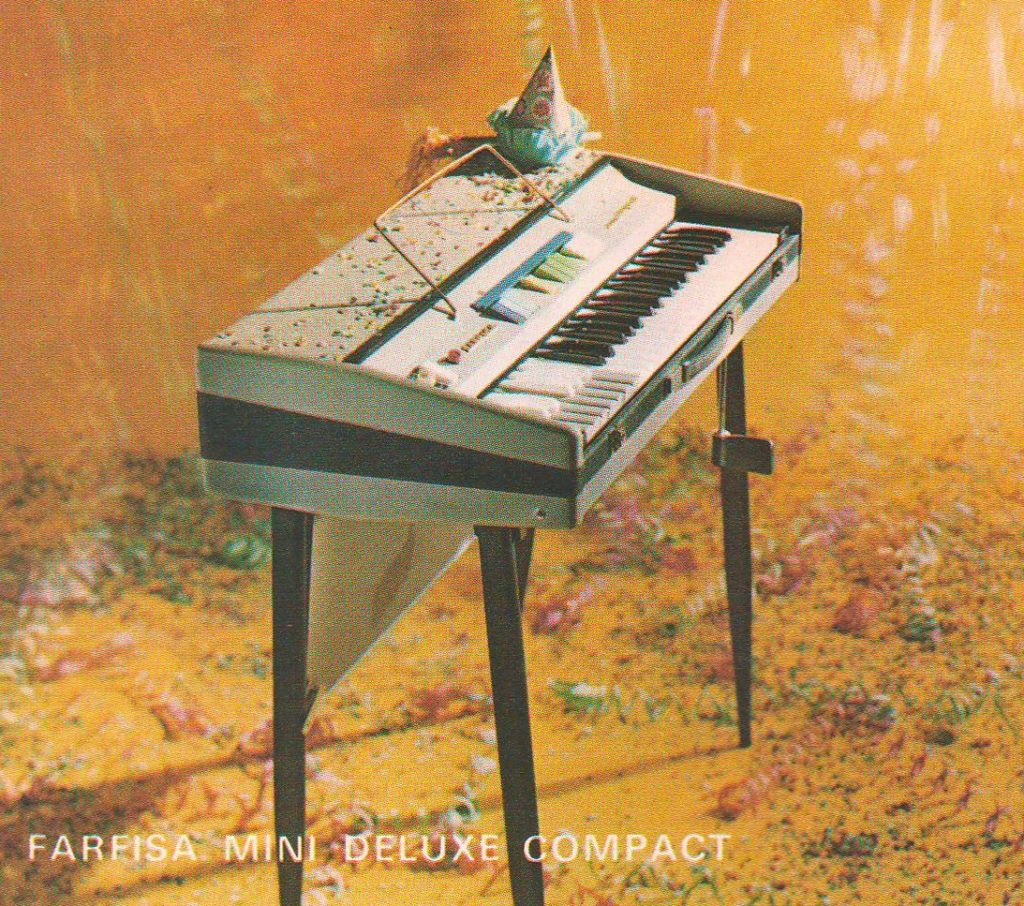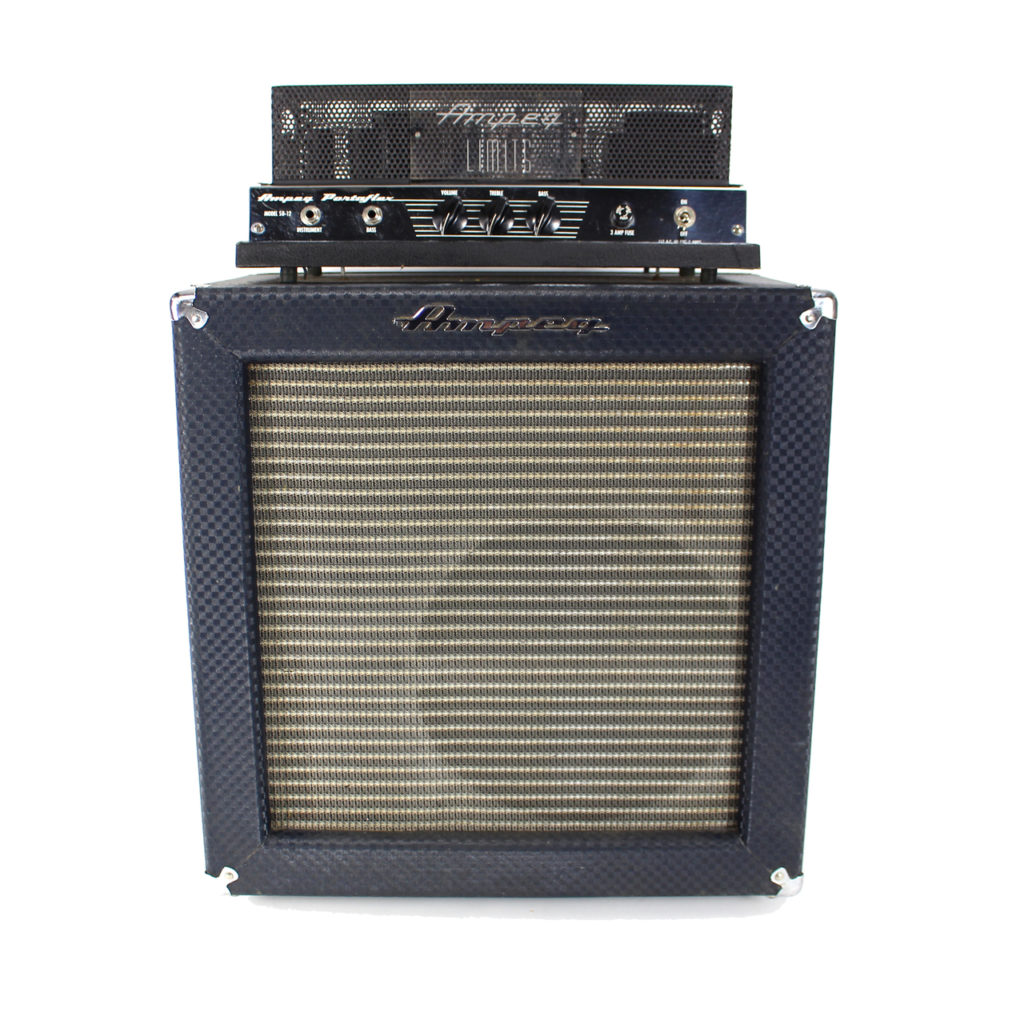A Keyboard Corner member asked what people did for keyboard amplification before PA. Man, that question really kicked off some memories.
Back in the day (1966), I played a Farfisa Mini Compact Deluxe through an Ampeg SB-12 bass amp. It was all I could afford. Mom and Dad lent me the money and I mopped floors at the local donut shop to pay them back. The shop had a wooden floor that was impregnated with grease. I still can’t face donuts to this day. 🙂

While packing for the house move, I found an original Farfisa brochure from the 60s era.
The Portaflex was pretty cool with its flip top. The amp was mounted to a covered board which acted as a base for the head and, when flipped over, it became the cabinet cover. The clamps held the base/cover board in place and did double-duty as the speaker connections to the cabinet.

The SB-12 had a 12″ Jensen speaker powered by a 25 Watt tube amp. It weighed 47 pounds — the first of a long line of heavy schleps.
Being the 1960s, of course, that wasn’t enough. Since I started playing with electronics and DIY at an early age, I tried my hand at an extension cabinet. I somehow came into a 15″ JBL speaker with a small tear in the cone. Impedance be damned, I just hooked it up in parallel with the Jensen via the clamps. Before building a cabinet, I would carry the JBL around in a suitcase which doubled as a “cabinet.” (!) The tear in the cone lent more bad-itude. [Why fizzy digital distortion doesn’t cut the mustard.]
In the R&B band, the guitars and vocals went through matching Ampeg guitar amps (probably Gemini’s). Only the top local bands could really afford PA for vocals (typically Fenders). Nobody put instruments through PA. The bass player had a Guild ThunderBass amp with that funky head. The bass player was quite good and laid down decent grooves. Can’t remember too much about the psychedelic band…
My failed experiments at extension and PA speaker cabs wound up as end-of-gig props. When we saw The Who trash their gear, we thought “What the heck!” I’d pull one of the legs off of the Farf and ram it through one of the prop cabinets.
My dream rig would have been a Vox Continental through a Fender Twin Reverb or Fender Super Reverb. I copped the Fender tilt-back idea and built a tilt-back stand for the SB-12. That got the speaker pointing up toward my ears.
Both the Connie and the Fenders were out of my financial reach. It took me three years to pay back my folks. By then, I had to sell the whole rig in order to make the college tuition nut. Given the rigors of college math, physics and computer science, it was the end of playing for quite a while. I can’t believe how much a vintage SB-12 fetches on the market these days!
The Farfisa Mini Compact Deluxe left me with no delusions about 1960s electronics. I tried tuning the F# oscillator and bunged the tuning coil. That was an unnecessary repair expense. That’s why I’m happy as a clam to play the Yamaha Reface YC today. The YC does a good job nailing the Farfisa and Vox.
A few other memories stick out like playing music fairs on stage/demo gear with the psychedelic band. One stage was incredibly small and I had a horn driver literally right in my ear. We played Doors, Steppenwolf, Vanilla Fudge, etc. at phenomenally loud volume, attracting every biker within earshot. They loved us. I think I still suffer hearing loss from those jobs.
Before signing off, I want to plug “Classic Keys: Keyboard Sounds That Launched Rock Music” by Alan Lenhoff and David Robertson. I received a copy yesterday and gave it a quick browse. The photography is excellent and the example gear is in tip-top shape. The book is long on history — less on playing technique and artistis, so some may be disappointed. Discount and used copies are coming onto the market and you may be able to save a few bucks if you can’t pony up the full $60USD. Recommended.
Copyright © 2020 Paul J. Drongowski
